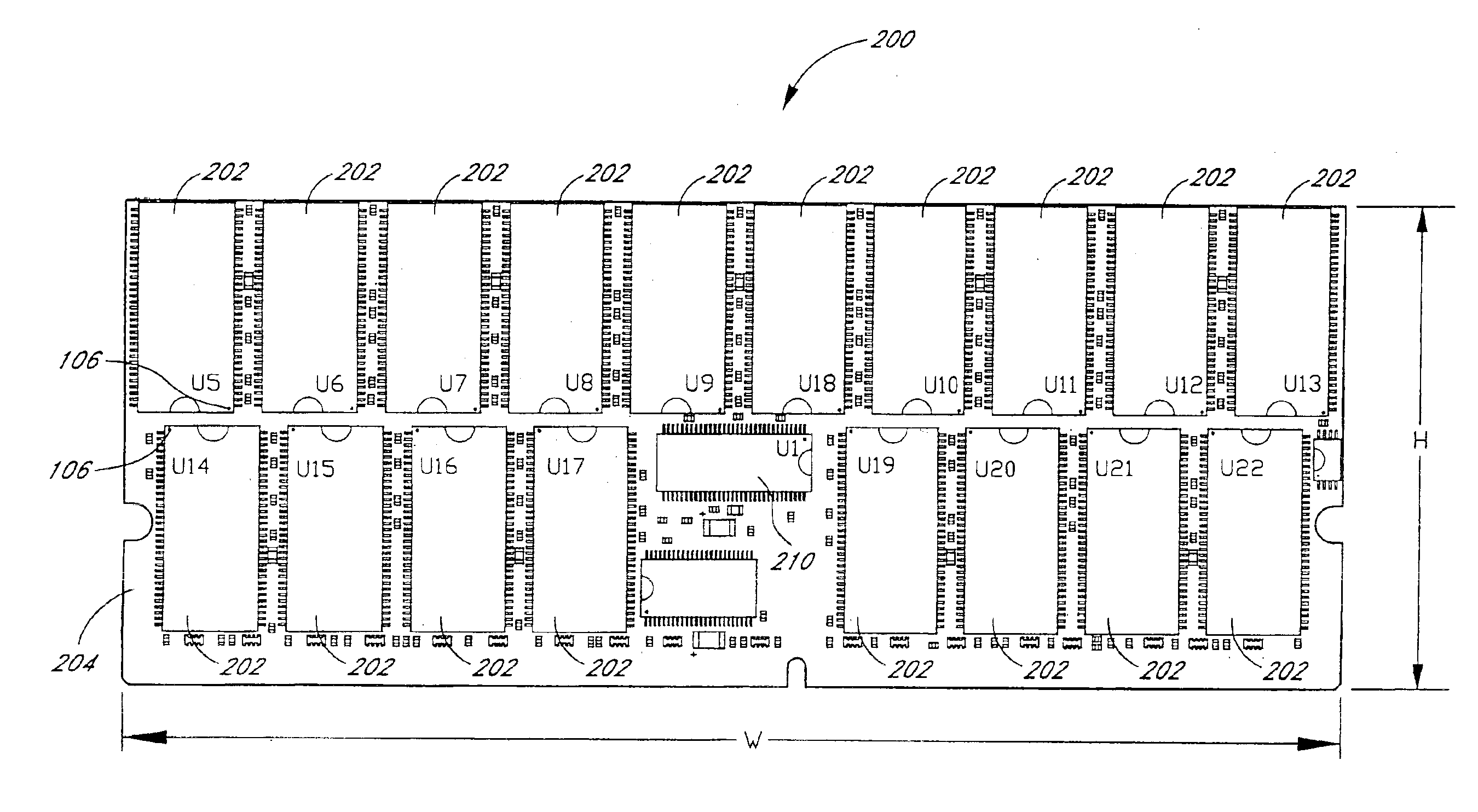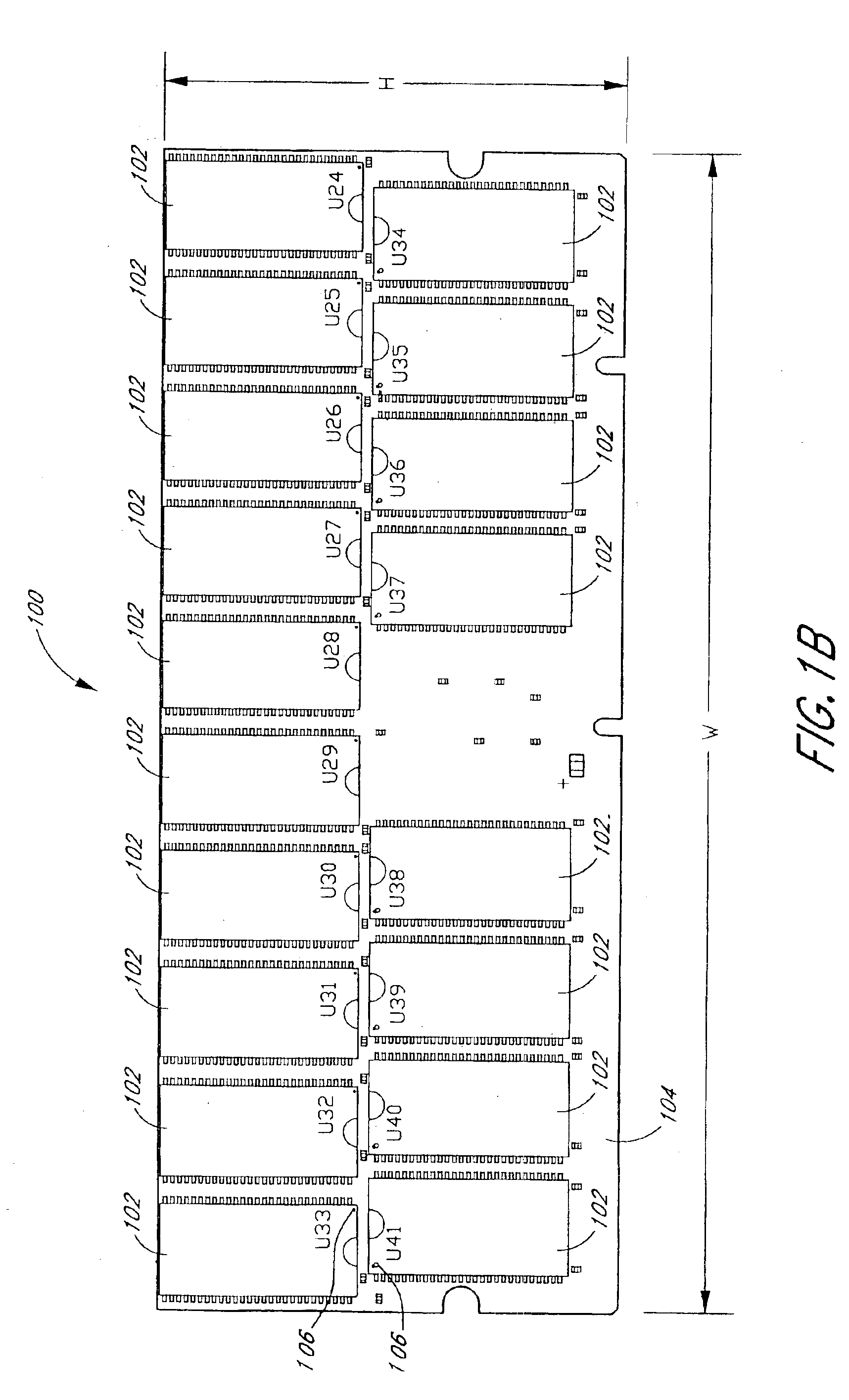Arrangement of integrated circuits in a memory module
a memory module and integrated circuit technology, applied in the field of memory modules, can solve the problems of high heat generation, increased cost of non-standard integrated circuits, and high cost of micro-bga integrated circuits, and achieve the effect of reducing and increasing the cost of micro-bga connectors
- Summary
- Abstract
- Description
- Claims
- Application Information
AI Technical Summary
Benefits of technology
Problems solved by technology
Method used
Image
Examples
Embodiment Construction
In the following description, reference is made to the accompanying drawings, which show, by way of illustration, specific embodiments in which the invention may be practiced. Numerous specific details of these embodiments are set forth in order to provide a thorough understanding of the invention. However, it will be obvious to one skilled in the art that the invention may be practiced without the specific details or with certain alternative components and methods to those described herein.
FIG. 1A illustrates the primary side of an embodiment of a memory module 100. The module 100 comprises two rows of memory integrated circuits 102 mounted onto a printed circuit board 104. The memory module 100 meets the timing standards for and is compatible with JEDEC requirements for a PC133 SDRAM module, but departs from the design guidelines contained in the PC133 design specification. In particular, the memory module 100 meets the timing and interface requirements of the PC133 standard notwi...
PUM
 Login to View More
Login to View More Abstract
Description
Claims
Application Information
 Login to View More
Login to View More - R&D
- Intellectual Property
- Life Sciences
- Materials
- Tech Scout
- Unparalleled Data Quality
- Higher Quality Content
- 60% Fewer Hallucinations
Browse by: Latest US Patents, China's latest patents, Technical Efficacy Thesaurus, Application Domain, Technology Topic, Popular Technical Reports.
© 2025 PatSnap. All rights reserved.Legal|Privacy policy|Modern Slavery Act Transparency Statement|Sitemap|About US| Contact US: help@patsnap.com



